How to calculate the number of sections of radiators
In order to correctly calculate the number of sections of a heating radiator per room, it is not enough for you to simply determine the total number of sections per specific area, here you need to take into account other parameters. First of all, by other parameters we mean the specific thermal power of the device, as well as its location, which can directly affect the heat loss in the room.
We will tell you how to make calculations based on the area of the house (quadrature) or its volume (cubic capacity), and in addition, we will show a video clip on the topic.
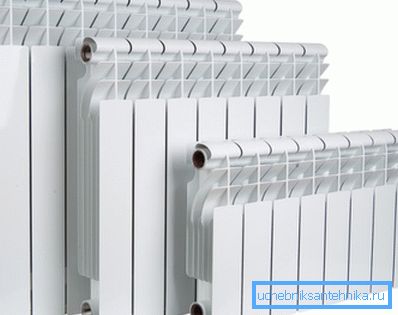
Calculation Methods
Little about radiators
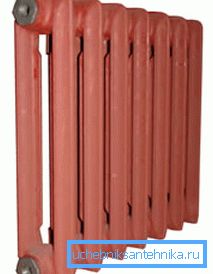
- Since the metal for the manufacture of heaters is used differently, then their power, of course, will also be different, besides, the size of the sections directly affects this.
- If you calculate the number of sections of cast-iron radiators, you should immediately make the reservation that such devices are more acceptable in houses with centralized heating, where the coolant is periodically supplied, but not in accordance with the microclimate of your apartment. Therefore, it is important for you to keep the heat obtained as long as possible and cast iron is an ideal option for this, besides, the flow rate per one section is much higher than that of other metals, which is extremely unprofitable with independent heating.
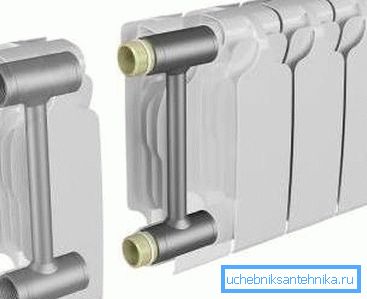
- In the case of independent heating, of course, it is best to use bimetal - This is a device where the walls are made of two metals - inside steel, and on top aluminum, which at the same time combines the ability to withstand high pressure and at the same time very quickly release heat to the room. Of course, the price of such radiators is higher than of cast iron.
- It is possible that you will be offered aluminum radiators in the store, but this will most likely be the same bimetal, since devices made of pure aluminum are not produced here, although they may be imported from Europe. But they have a very high cost and do not withstand high pressure, moreover, the instruction provides that a special fluid is always added to the coolant.
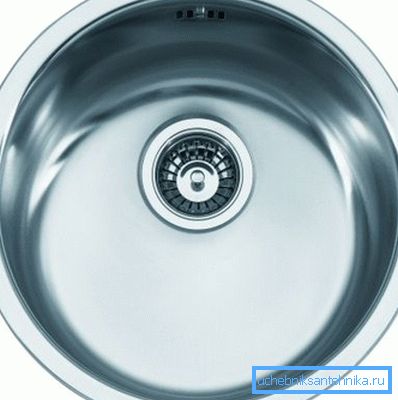
- You can also buy a steel radiator panel type, which also very quickly gives off heat and, as a rule, is used for autonomous heating. But such devices are not produced in the form of sections, but in the form of panels, therefore, to calculate their number, you will need the specific power of each of them, which is indicated in the passport.
Note. When installing the heating with your own hands, it is extremely undesirable to install radiators from a different metal in one circuit, especially with regard to combining aluminum and cast iron in order to avoid the oxidation process.
Area calculation
Note. The most serious sources of cold in a normally warmed room are windows and doors, but the door can be solid, thick and without the slightest crevices, while window glass cannot be warmed, even a multi-compartment package. Therefore, in order to more accurately calculate the number of sections, under each window you need to design a heating device - this will create something like an air curtain that cuts off the cold flow.
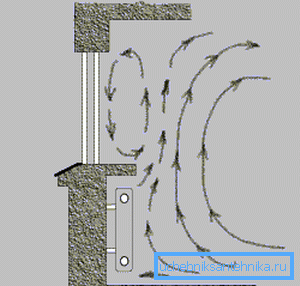
For a standard room height, where the ceilings have a height of 240-260 cm, it is very easy and quick to calculate sections of radiators, but for this you need to measure the area of a room or the whole house.
We are talking about the standard height of the premises, therefore, relying on SNiP 2.04.05-91 * (instead of SNiP 2.04.05-91), 100 W of thermal energy is needed for each square meter of the room. Imagine that you need to install the device in the room 3.56.5 = 22.75 m2, this means that its power should be 22.75 * 100 = 2275 W = 2.275 kW.
But if it is a panel radiator, then we simply choose a device with the most suitable power, for example, 2.3 or 2.5 kW (it’s better to round up to have a margin), but the sections should be counted. Let's make a trial calculation - for bimetallic batteries, one section has about 160 to 180 watts.
But we take the average value - 170 W or 0.17 kW (the power of the sections must be indicated in the technical passport from the manufacturer). So, we need to divide the total required power for the premises by 0.17 and in this situation we will get 2.275 / 0.17? 13.38, and if this number is rounded, then we get 14 pieces.
However, there may be increased heat loss indoors, for example, it may be a room with a balcony, which is used periodically, then the total power should be increased by 15-20% and the same should be done when you want to close the radiators with a decorative grill or hide in a niche. That is, with the same area of 22.75 m2, you will need to multiply this number not by 100%, but by 115% or 120% and from this amount make a calculation of radiator heating.
Calculation by volume
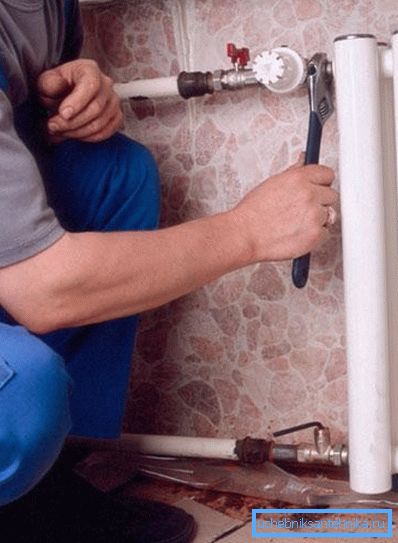
But if you calculate the number of sections of radiators for SNiP 2.04.05-91 *, based on the cubic capacity of the room, the calculation principle will remain approximately the same, only the original data will change
So, for panel houses, one cubic room requires 41 W, but if a house or apartment meets modern standards of insulation, then 34 IT / m is enough3. Let's try to make calculations with the same area of 22.75 m2, only the height of the ceilings will be 3.0 m (higher than the standard), as well as with the same section thickness. (See also the article How to choose bimetallic heating radiators: features.)
So, the volume of the room in this case will be 3.5 * 6.5 * 3.0 = 68.25 m3, then in the panel house we need 68.25 * 41 = 2798.25 W or round it up to 2.8 kW. Then for this room we need 2.8 / 0.17 × 16.47 or 17 rounds of bimetal round. For a well-warmed room you will need 68.25 * 34 = 2320.5 W, then 2320.5 / 170 = 13.65 or 14 sections are rounded.
But to calculate the number of radiators, you can simply divide the sections by the number of windows, but in any case, they must be equipped with heating devices, even if they are of different sizes, so that the heat losses do not increase.
Note. It should be said that there are also the most accurate calculations, which take into account not only the area / volume of the room and the heat capacity of the radiator section, but also a number of different coefficients. This includes the specific temperature that is needed in this particular room, the glazing rate of the windows (single, double or triple glazing), thermal insulation (weak, medium, high), matching the area of the windows and the floor, and so on. But such calculations are necessary for specialized premises, for example, for installing a microclimate in the storerooms of a museum or some laboratory.
Conclusion
Do not forget that the power specified by the manufacturer for the sections is often taken from the maximum coolant temperature, therefore, it can be called overestimated. On this basis, rounding always happens in a big way, and sometimes, especially in cold regions, an additional section is added.